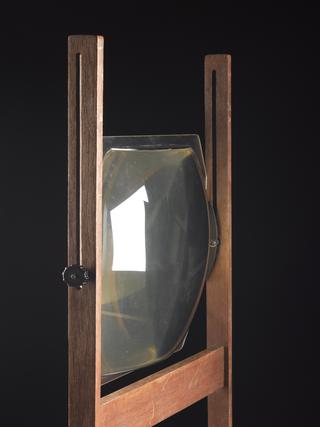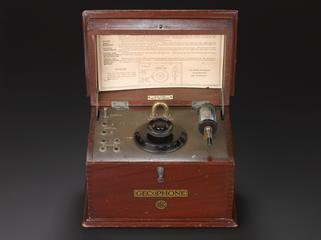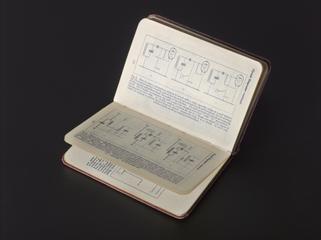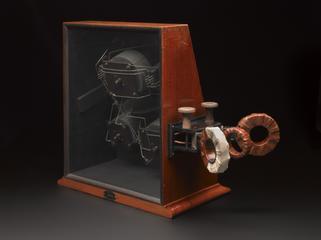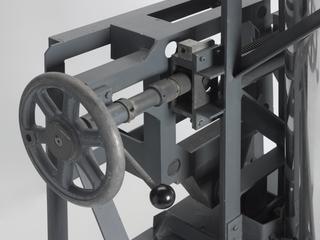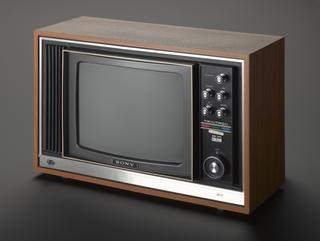




Silicon crystal for wireless telegraphy, mounted in a locket, unknown maker, England, 1906-1916
Silicon crystals were often used in early wireless telegraphy sets. This piece of silicon was used as a detector in the wireless telegraph installation aboard the SS Nonsuch, the first British cargo ship to be equipped with such an instrument. On 16 September 1910, the ship received a signal from the North Foreland Wireless Station off the coast of Kent while near Monaco - a distance of 940 nautical miles.
Details
- Category:
- Radio Communication
- Object Number:
- 1916-73
- Materials:
- glass, brass (copper, zinc alloy), metal (unknown) and silicon
- Measurements:
-
overall: 30 mm diameter, .013 kg
- type:
- crystal
- credit:
- Donated by G Langton
